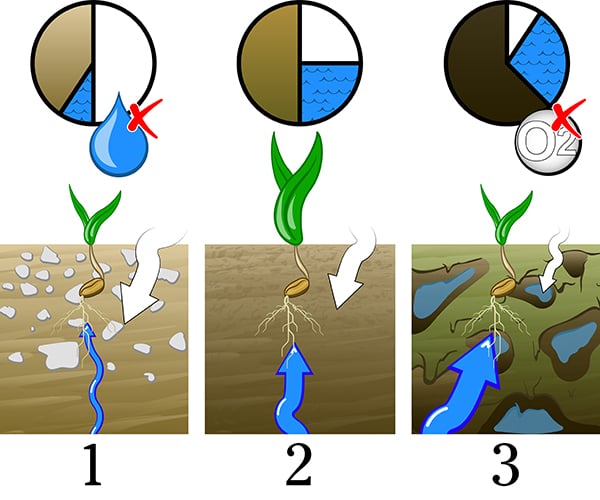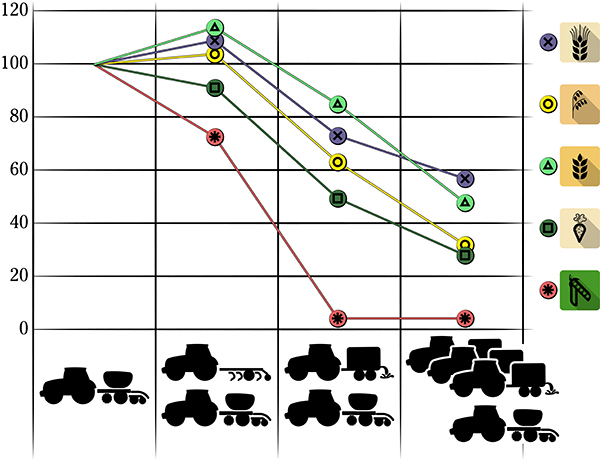Roots impeded
Soil compaction results in root growth being restricted and affects mechanical resistance to root development in two ways:
- Compaction decreases the number and size of large pores, macropores. As a result, there are fewer pores with diameter larger than roots in which the roots can grow freely, without mechanical resistance
- Compaction increases the mechanical resistance of the soil through pressing soil particles more closely together




